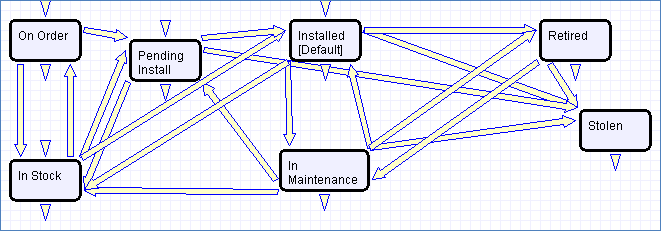Configuration Items Table
The Configuration Items table holds records containing information about your company's Configuration Items (assets). It may include CI's that are in inventory and not in service, as well as all assets that are in service.
Use Case
Configuration Item Creation
Staff may add a Configuration Item manually to the system by creating a new record, or integrated Discovery systems may create CI records automatically with specified attributes.
Configuration Items have type-specific attribute fields (Manufacturer, Model, Serial Number, etc.) and relationships to other CIs, Service Requests, Problems, and Change Requests.
Related Service Requests, Problems, and Change Requests are displayed as lists of records within a CI, so the history of a given CI is readily available.
Configuration Items may also be related to other CI's in an upstream and downstream embedded table.
Record Creation
Configuration Items may be created independently or when selecting Configuration Items in Change Request and Contract records. Configuration Item Name and Configuration Item Type are required fields.
Ownership
Configuration Item ownership is defined as the user whose Login matches the User Login field in the Configuration Item record.
Processing of Records
Configuration Items follow a lifecycle workflow from ordering through retirement. There are no business rules associated with the Configuration Item table.
Configuration Items are created in the state of Installed by default (see Workflow diagram below). Configuration Items that are requested but not immediately available might be created in a state of On Order, moved to In Stock when the Configuration Item is received, Pending Install while Operations is tasked with installing the Configuration Item, and finally Installed. Installed Configuration Items can change to In Maintenance for repairs and Retired or Stolen when the Configuration Item is no longer in use.
Workflow
Integration with CMS and CMDBs
All Service Requests, Change Requests, Incidents, and Problems are fully integrated with the Configuration Management Database (CMDB). Every Configuration Item displays a related table for each request type, showing all of the Requests that the Configuration Item was included in. With the appropriate permissions, a user can easily open the Configuration Item from any of the Requests related to it, and view other related Requests to help identify, investigate, diagnose, and eliminate problems/issues more easily.
Fields
The Configuration Item fields are described in the Configuration Item Fields Table in the Appendix.

